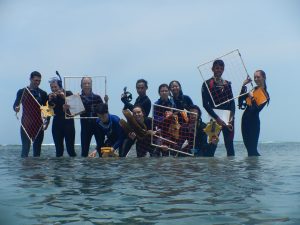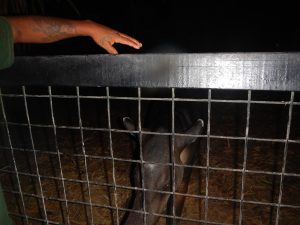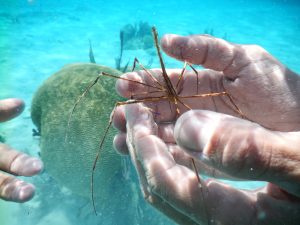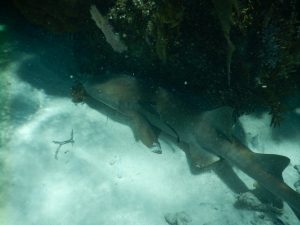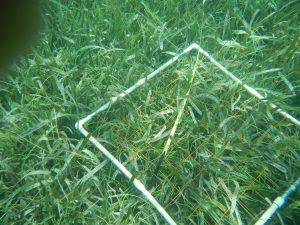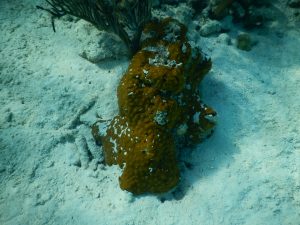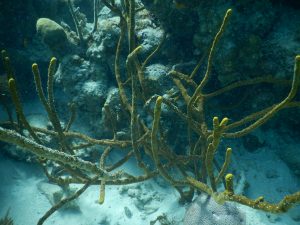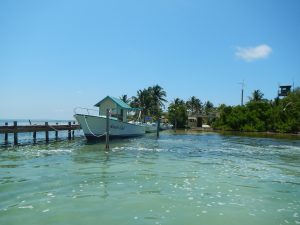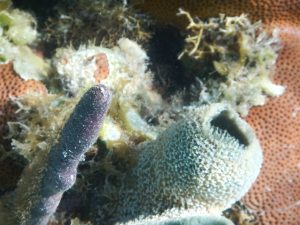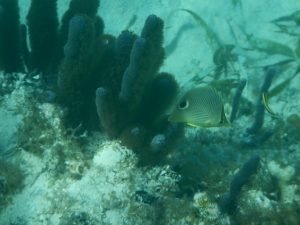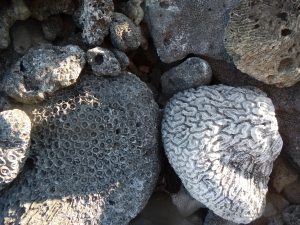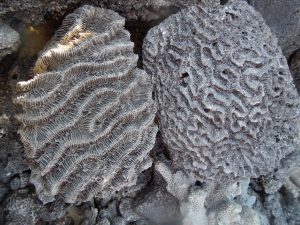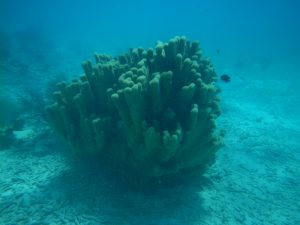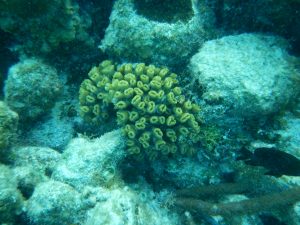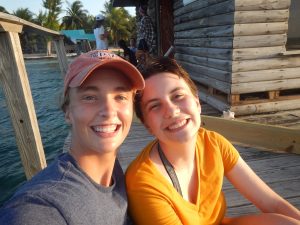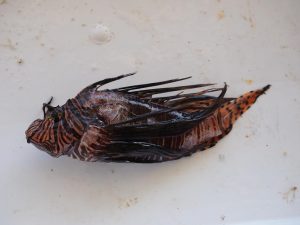DAY 5 — Another full day of field biology! Starting with fried jack and fresh fruit for breakfast plus a leisurely coffee with Tian-Tian and Sarah. Our departure was postponed because of the windy conditions, so we listened to Damien talk about annelids and mollusks.
Instead of heading out on the boat for an explanation of reef zonation, we suited up and walked through the “Mangroves of Death” to the back reef. We planned to assess the presence of Christmas tree worms (Spirobranchus gigantea), trying to answer the question: do Christmas tree worms show a host preference for stony coral? We hypothesized that more Christmas tree worms would be found on brain corals and that more Christmas tree worms would be found on larger corals.
Collecting data was difficult on the shallow reefs; constantly being pushed around by the waves and crashing into rocks was an inconvenience. Adolfo found a Caribbean spiny lobster shell from a recently molted lobster, which was pretty cool.
For a sponge update: I didn’t identify any new sponges among the patch reefs today. BUT Adolfo found a big, old dead coral specimen. See below.
PHOTO OF SPONGE (AND ME)
I’m pretty sure it’s a yellow tube sponge (Aplysina fistularis).
I’m hoping that when we eventually get out to the reef crest and fore reef I’ll see some more new species of sponge. I’m still hoping for a barrel sponge (like the Giant Barrel Sponge, Xestospongia muta) or the Pink Vase Sponge (Niphates digitalis).
After a delectable lunch, Isaac gave a lecture on marine debris. A fun fact: microplastics are thought to account for 90% of marine debris. Our next activity fit with the theme. We collected trash and marine debris from various locations around Middle Caye (11 people for 30 minutes, so 330 people-minutes). There was SO MUCH TRASH, especially plastics. Kind of a bummer.
We arrived back at the wet lab with our trash bags stuffed with plastic forks, bottles, toothbrushes, sandals, combs, Styrofoam pieces and much more. Waiting for us were several freshly collected and cut coconuts. Man, I love coconut.
After a brief stint in the hammock, we sorted, counted, and weighed all of the debris. 2,460 pieces, or 18.46 kg, of plastic.
Before dinner we played some beach volleyball. Look out for an EBIO 319 intramural team, coming SY 2018.
Later in the evening, Scott and Adrienne set up lights in the water at the end of the dock. It was kind of eerie being out on the dock in the darkness, looking out over the huge ocean. The water was choppy because of the strong wind, but we were able to observe a bunch of fish and a sting ray. Also, we saw the bright, reflecting eyes of a crocodile lounging behind a log.
Until tomorrow!

